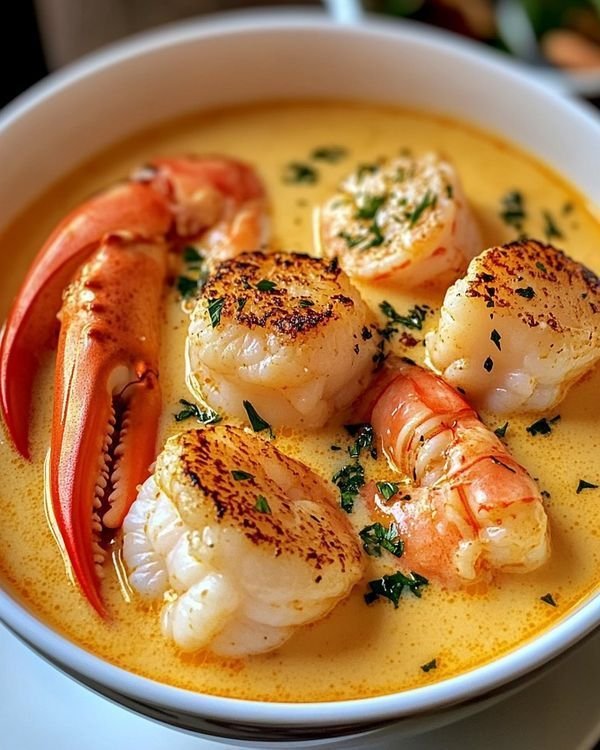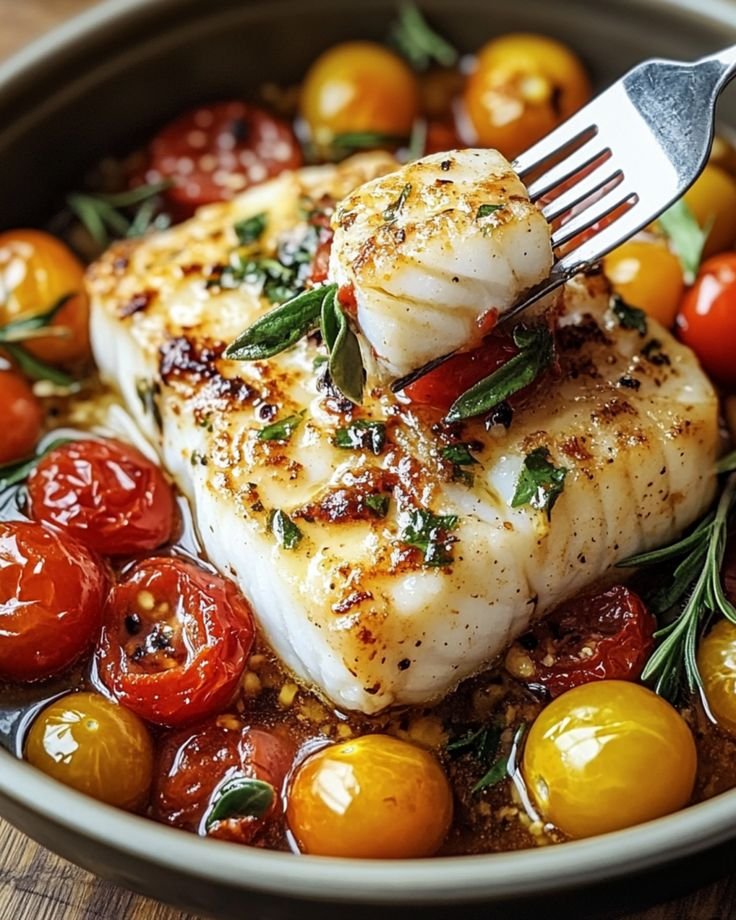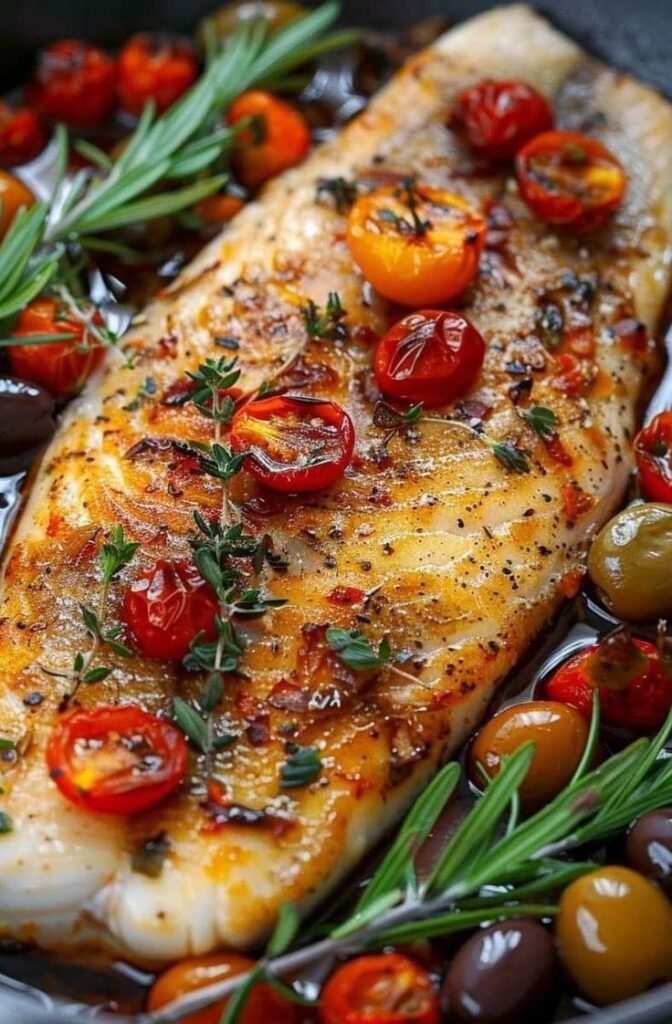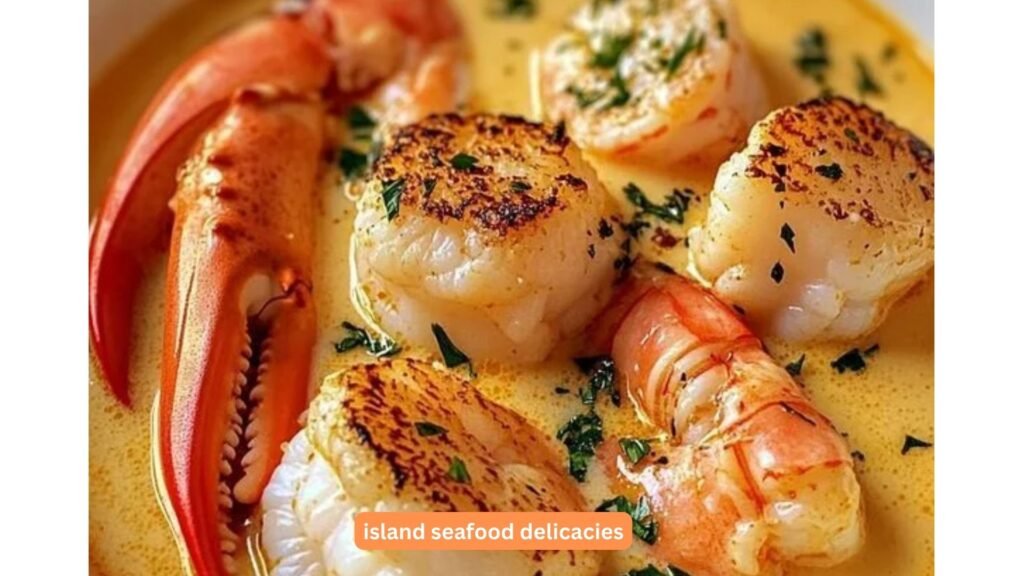There’s something magical about island cuisine, particularly when it comes to seafood. Surrounded by abundant waters and blessed with unique microclimates, islands around the world have developed extraordinary culinary traditions that celebrate the bounty of the sea. These isolated culinary laboratories have perfected techniques passed down through generations, creating island seafood delicacies that not only nourish but tell stories of cultural heritage, survival, and celebration. From the Caribbean to the Mediterranean and across the Pacific, these island seafood delicacies represent the pinnacle of coastal gastronomy.
The Cultural Significance of Island Seafood Delicacies
Before modern transportation and refrigeration, island communities relied heavily on the surrounding waters for sustenance. This necessity fostered deep relationships between islanders and the sea, resulting in sophisticated fishing practices and preservation techniques that have evolved into today’s celebrated culinary traditions.
Island seafood cuisine reflects a profound understanding of:
- Seasonal harvesting patterns that ensure sustainability and optimal flavor profiles throughout the year
- Preservation methods like salting, smoking, fermenting, and drying that transform fresh catches into staple ingredients with extended shelf life
- Ceremonial significance, with particular seafood dishes marking important life events, religious observances, and community celebrations
- Resourcefulness in utilizing every part of the catch, minimizing waste and maximizing nutritional value
- Adaptation to changing environmental conditions, creating resilient food systems that can withstand natural disasters and seasonal variations
Top 15 Island Seafood Delicacies From Around the World
1. Conch Fritters (Bahamas)
The Bahamas’ signature seafood offering transforms the meat of the queen conch—a large sea snail with firm, white flesh—into golden-brown fritters that perfectly balance crispiness with tenderness. These bite-sized delights embody the laid-back Caribbean spirit while showcasing culinary ingenuity.
- The conch meat is tenderized and finely diced before being mixed with a batter containing bell peppers, onions, hot peppers, and a blend of island herbs and spices that create a complex flavor profile
- Traditional preparation involves hand-scoring the conch meat to break down tough fibers, a technique that has remained unchanged for generations
- The fritters are served with a tangy dipping sauce made from lime juice, Bahamian goat peppers, and mayonnaise, creating a perfect contrast to the savory fritters
- At Arawak Cay in Nassau, known locally as “Fish Fry,” you’ll find dozens of vendors competing for the title of best conch fritters, each with their closely guarded family recipe

2. Lobster Paella (Mallorca, Spain)
Off Spain’s eastern coast, the island of Mallorca has perfected a seafood paella that elevates the humble rice dish into a celebration of Mediterranean abundance. The star of this dish is the spiny lobster found in the rocky coastal waters surrounding the Balearic Islands.
- Mallorcan lobster paella uses locally grown Bomba rice, which absorbs three times its volume in broth without becoming mushy, creating the perfect texture
- The dish begins with a sofrito base of locally grown Ramallet tomatoes, sweet Mallorcan onions, and garlic slowly cooked in olive oil until caramelized
- Fresh spiny lobster is first used to create a rich stock, then added back to the rice during the final cooking stage to maintain its tender texture
- Traditional preparation occurs in wide, shallow paella pans over open wood fires, often using pine cones and orange wood that infuse the dish with subtle aromatics
- In Porto Cristo and Cala Figuera, family-run seaside restaurants serve this dish only during lobster season (April to August), emphasizing sustainability and peak flavor
3. Amok Trey (Cambodia)
Though Cambodia is not entirely an island, its lake islands and coastal regions have perfected Amok Trey, a sublime fish curry steamed in banana leaves that showcases the complexity of Khmer cuisine. This dish represents the perfect marriage of freshwater fish, coconut cream, and aromatic spices.
- The distinct flavor comes from kroeung, a handmade curry paste combining lemongrass, galangal, turmeric, kaffir lime leaves, and fermented fish paste (prahok), pounded together in a stone mortar
- River fish (often snakehead or catfish) is gently coated in this paste and coconut cream before being wrapped in banana leaves shaped into boats and steamed until custard-like
- The dish is finished with a drizzle of reduced coconut cream and thinly sliced kaffir lime leaves, creating a dramatic visual contrast and aromatic finish
- On Koh Rong and Koh Rong Samloem islands, this dish features sea bass or grouper caught that morning, offering a maritime variation of this traditionally freshwater delicacy
- The banana leaf imparts subtle flavor while creating a natural, biodegradable serving vessel—a sustainable tradition predating modern conservation movements
4. Okinawan Seafood Rafute (Japan)
Japan’s southernmost prefecture, Okinawa, boasts one of the world’s highest life expectancies, partly attributed to its unique diet. Traditional Okinawan rafute pairs slow-braised pork belly with local seafood in a sweet-savory balance that exemplifies the islands’ distinct culinary heritage.
- The seafood version incorporates awamori (Okinawan rice spirit), brown sugar, soy sauce, and shiitake mushrooms in a braising liquid that slowly transforms both pork and seafood into meltingly tender morsels
- Local spiny lobster, octopus, and sometimes mozuku seaweed create a unique land-and-sea combination that reflects Okinawa’s island geography
- The dish is simmered for at least four hours at very low temperatures, allowing the collagen in both meats to break down completely while absorbing the complex flavors of the braising liquid
- Served over a bed of locally grown bitter melon to balance the richness, this dish represents the Okinawan concept of nuchi gusui—food as medicine
- In Naha’s Makishi Market, family-run restaurants prepare this dish in clay pots that have been seasoned through decades of use, adding depth to the final flavor
5. Santorini Tomato-Caper Octopus (Greece)
The volcanic island of Santorini produces extraordinarily sweet, small tomatoes and briny capers that pair perfectly with locally caught octopus. This rustic dish exemplifies Greek island cuisine’s ability to transform simple ingredients into transcendent meals.
- Octopus is first tenderized by traditional pounding against coastal rocks, then sun-dried before being slowly braised with Santorini’s PDO-protected cherry tomatoes, creating a sweet-savory sauce of remarkable depth
- The island’s volcanic soil imparts a mineral intensity to both the tomatoes and the capers, creating a terroir-driven flavor profile impossible to replicate elsewhere
- White wine made from indigenous Assyrtiko grapes, grown in the island’s unique basket-trained vineyards, adds acidity and complexity to the braising liquid
- The dish is finished with locally harvested capers and caper leaves, adding bright, piquant notes that cut through the richness of the octopus
- In tavernas along Ammoudi Bay, this dish is served with freshly baked sourdough bread for soaking up the intensely flavored sauce—a practice locals call “papara”
6. Kinilaw (Philippines)
The Philippine archipelago has perfected the art of preparing raw fish with acidic marinades long before the Spanish introduced the term “ceviche.” Kinilaw showcases the exceptional freshness of just-caught fish through a preparation method that “cooks” the fish without heat.
- Unlike other raw fish preparations, kinilaw uses coconut vinegar (tuba) derived from coconut sap, creating a more delicate acidity that doesn’t overwhelm the fish’s natural sweetness
- The dressing incorporates calamansi (Philippine lime), ginger, onions, chili peppers, and often coconut milk, creating a complex interplay of spicy, sour, and creamy notes
- The freshest fish (typically yellowfin tuna, mackerel, or tanigue) is cubed and marinated briefly—just 5-10 minutes—preserving its tender texture while eliminating bacteria
- In coastal communities of Mindanao and the Visayas, fishermen prepare this dish on their boats immediately after catching fish, using seawater for brining and enjoying the ultimate fresh-to-table experience
- Regional variations include the addition of tabon-tabon fruit (to eliminate fishy flavors) in Mindanao, or green mangoes and torch ginger flower in the central islands
7. Poke Bowls (Hawaii)
Long before the mainland poke craze, Native Hawaiians were crafting this simple yet profound dish that honors the pure flavor of raw fish. Traditional poke (pronounced poh-kay) bears little resemblance to contemporary versions, focusing instead on the perfect balance between fresh fish and minimal seasonings.
- Traditional Hawaiian poke features freshly caught ahi tuna (yellowfin or bigeye) cut into cubes and seasoned simply with sea salt, limu seaweed, crushed inamona (roasted candlenut), and perhaps a touch of chili pepper
- The fish is selected for its quality rather than quantity, with an emphasis on fish caught using sustainable methods that honor Hawaiian fishing traditions
- Unlike mainland interpretations that often marinate the fish for extended periods, authentic Hawaiian poke is dressed just before serving to maintain the fish’s integrity
- On Oahu’s North Shore, local poke shops serve the dish with just-cooked white rice, allowing the warmth to slightly temper the chilled fish, creating a beautiful temperature contrast
- The dish reflects Hawaii’s multicultural heritage, with subtle influences from Japanese, Filipino, and Portuguese culinary traditions that settled on the islands
8. Balinese Pepes Ikan (Indonesia)
The Indonesian island of Bali offers a seafood delicacy that exemplifies the complex, aromatic profile of Indonesian cuisine. Pepes Ikan features fresh fish marinated in a spice paste, wrapped in banana leaves, and grilled over coconut husks for a smoky, fragrant experience.
- The distinctive spice paste (bumbu) combines turmeric, galangal, lemongrass, candlenuts, shallots, and chilies, all freshly ground on traditional stone mortars for maximum flavor extraction
- The fish (often mackerel, snapper, or trevally) is coated in this paste along with fresh lime leaves, lemongrass stalks, and sometimes belimbing wuluh (star fruit), creating layers of aromatic complexity
- The banana leaf wrapper serves multiple purposes—imparting flavor, trapping moisture, and creating a natural steaming environment that infuses the fish with the essence of the herbs and spices
- In coastal villages like Jimbaran, this dish is prepared in communal cooking areas, with families preparing their catches together and sharing preparation techniques across generations
- The finished dish is unwrapped tableside, releasing an intoxicating aroma of spices, smoke, and fresh fish that prepares the palate for the complex flavors to follow
9. Barbados Flying Fish (Caribbean)
Barbados, the easternmost Caribbean island, is so closely associated with flying fish that the species appears on the nation’s currency. This national dish pairs lightly fried flying fish fillets with a spicy Bajan seasoning that exemplifies the island’s bold, flavorful approach to seafood.
- Flying fish are carefully deboned and marinated in a mixture of lime juice, cloves, thyme, marjoram, Scotch bonnet peppers, and the island’s famous yellow hot sauce, creating a multidimensional flavor profile
- Traditional preparation involves lightly scoring the skin to allow the marinade to penetrate more deeply, then rolling the fillets with a filling of the same aromatic mixture
- The fish is typically served with cou-cou (a polenta-like dish made from cornmeal and okra) and pickled cucumber salad, creating a balanced meal that showcases multiple cooking techniques
- At Oistins Fish Fry on Friday nights, dozens of vendors prepare this dish over open flames, creating a communal celebration of Barbadian culinary heritage
- The sustainability of flying fish has become a point of national pride, with strict fishing seasons and harvesting methods designed to protect this iconic species
10. Māori Seafood Hangi (New Zealand)
New Zealand’s indigenous Māori people have perfected the art of earth oven cooking, creating a unique method for preparing seafood that imparts smoky, mineral qualities impossible to achieve through conventional cooking methods.
- The hangi begins with heating volcanic rocks over open flame until white-hot, then placing them in an earth pit lined with wet sacks and fresh foliage
- Seafood—often green-lipped mussels, paua (abalone), koura (freshwater crayfish), and various fish—is wrapped in leaves with kumara (sweet potato) and placed on the rocks
- The pit is covered with earth, creating a sealed environment that slowly steams the food for 3-4 hours, allowing flavors to meld while maintaining the distinct character of each ingredient
- The geothermal activity in regions like Rotorua adds unique mineral properties to the cooking process, with subtle sulfuric notes enhancing the natural sweetness of the seafood
- During important ceremonies, a karakia (prayer) is performed before opening the hangi, acknowledging the connection between the earth, the sea, and the sustenance they provide

11. Pasta con le Sarde (Sicily, Italy)
Sicily’s signature pasta dish represents the island’s position at the crossroads of Mediterranean civilizations. Pasta con le Sarde combines fresh sardines with wild fennel, pine nuts, raisins, and saffron—ingredients that tell the story of successive waves of conquerors and their culinary influences.
- Wild fennel—not the bulb variety but the feathery wild plant that grows throughout Sicily—provides an anise-like flavor that perfectly complements the richness of fresh sardines
- The pasta is typically bucatini, a thick spaghetti-like noodle with a hole running through the center that captures the complex sauce
- The combination of savory sardines, sweet raisins, and aromatic saffron reflects Sicily’s Arab-Norman heritage, with flavors introduced during the Moorish occupation preserved in this traditional dish
- In Palermo’s historic La Vucciria market, fishmongers clean and fillet sardines with astonishing speed, preparing them specifically for this beloved local specialty
- The finished dish is topped with toasted breadcrumbs (mollica) rather than cheese, a tradition reflecting Sicily’s history of poverty when breadcrumbs served as “poor man’s Parmesan”

12. Garudhiya (Maldives)
The Maldives’ quintessential fish soup represents the pure, unadulterated flavor of the sea. This clear broth of remarkable depth showcases the islands’ tuna fishing heritage and commitment to culinary minimalism.
- The soup begins with fresh tuna (typically skipjack or yellowfin) simmered gently in salted water with nothing more than a few curry leaves, creating a pure expression of the fish’s natural flavor
- Unlike complex fish soups from other traditions, garudhiya’s simplicity highlights the exceptional quality of just-caught tuna, with the broth becoming milky from collagen released during cooking
- The dish is served with steamed rice, fresh lime, chili, and coconut, allowing diners to customize their experience according to personal preference
- On local islands like Maafushi or Fulidhoo, this dish is prepared communally, with the day’s catch divided among families who gather to share the meal and strengthen community bonds
- Despite the luxury resorts that dominate Maldivian tourism, this humble dish remains beloved across all social strata, appearing on both family tables and in high-end restaurant interpretations
13. Romazava with Seafood (Madagascar)
Madagascar’s national dish typically features meat but coastal variations showcase the island’s abundant seafood resources. This one-pot stew combines various seafood with brèdes (local greens) and distinctive Malagasy spices for a complex, satisfying meal.
- Traditional preparation begins with a base of onions, tomatoes, ginger, and garlic slowly caramelized in a heavy pot, creating a flavor foundation for the seafood to follow
- The greens—typically brèdes mafana, a slightly spicy leafy green unique to Madagascar—are added along with various seafood like prawns, crab, and locally caught fish
- The dish is seasoned with sakay, Madagascar’s signature chile paste, and often includes vanilla pod or cinnamon, reflecting the island’s status as a major spice producer
- In coastal communities like Fort Dauphin, the dish features up to seven different types of seafood, each added at a precise moment to ensure perfect doneness
- The finished stew is served over rice with achards (pickled vegetables), creating a complete meal that balances protein, carbohydrates, and vegetables
14. Kokoda (Fiji)
Fiji’s version of raw fish marinated in citrus and coconut milk showcases the islands’ abundant marine life and tropical produce. Similar to ceviche or poisson cru, kokoda has distinctive Fijian characteristics that set it apart from other Pacific raw fish preparations.
- Unlike other marinated raw fish dishes, kokoda uses coconut cream that has been gently heated then cooled, a process that stabilizes the emulsion and prevents curdling when combined with acidic ingredients
- The fish (typically walu/Spanish mackerel or mahi-mahi) is marinated in lime or lemon juice until the exterior turns opaque while the center remains translucent, creating a perfect balance of textures
- After the initial marination, the fish is rinsed briefly to remove excess acidity before being combined with coconut cream, finely diced tomatoes, onions, and chilies
- In traditional preparation, the ingredients are mixed by hand in a tanoa (wooden bowl), with gentle tossing rather than stirring to preserve the integrity of the fish pieces
- On islands like Taveuni, this dish is often served in half coconut shells, garnished with mota (Fijian spinach) and fresh chili, creating a stunning visual presentation that honors the dish’s tropical origins
15. Harðfiskur (Iceland)
Iceland’s dried fish tradition represents one of the world’s oldest preservation methods, transformed over centuries into a beloved snack food. This intensely flavored dried fish—typically cod, haddock, or wolffish—offers a concentrated dose of protein with a distinctive chewy texture.
- The fish is traditionally dried outdoors on wooden racks called hjell, exposed to cold North Atlantic winds rather than direct sunlight, a process that can take 4-6 weeks depending on weather conditions
- Unlike other dried fish traditions, Icelandic harðfiskur uses no salt in the preservation process, allowing the pure flavor of the fish to shine through
- The finished product develops a distinctive ammonia-like aroma from protein breakdown during drying, but the taste is surprisingly mild and nutty
- Traditional consumption involves breaking the rigid fish into pieces and spreading it with softened Icelandic butter, which adds richness and helps soften the intensely chewy texture
- In the Westfjords region, particularly in Ísafjörður, you can visit drying houses where this ancient tradition continues using methods largely unchanged for centuries
Best Practices for Exploring Island Seafood Delicacies
As you embark on your global island seafood adventure, consider these practical tips to enhance your culinary journey and fully appreciate authentic island seafood delicacies:
- Research seasonal availability before planning your trip—many island seafood specialties are tied to specific fishing seasons that ensure sustainability and optimal flavor
- Seek out community fishing harbors and markets where you can observe the day’s catch being brought in and processed, often indicating where locals go for the freshest seafood
- Learn basic phrases to ask about sourcing and sustainability in the local language, showing respect for both the culture and environment
- Consider guided food tours led by locals who can provide cultural context and access to establishments you might not discover independently
- Be adventurous but respectful—while trying new dishes is the goal, understand that some seafood may have cultural or ceremonial significance beyond mere sustenance
Explore Island Seafood Delicacies
Island seafood traditions face significant challenges from climate change, overfishing, and changing consumer preferences. By seeking out these authentic experiences, you not only treat your palate to extraordinary flavors but also help preserve culinary heritage for future generations. The next time you find yourself on an island—whether in the Caribbean, Mediterranean, Pacific, or beyond—look beyond the tourist menus and discover the true taste of place through these remarkable island seafood delicacies.
Why Island Seafood Delicacies Matter
Each bite tells a story of adaptation, innovation, and respect for the sea’s bounty. In our increasingly homogenized world, these distinctive island seafood delicacies offer something increasingly rare: authentic flavors that could only develop in these specific places, shaped by geography, climate, and generations of culinary wisdom.
Sustainable Enjoyment of Island Seafood
When exploring island seafood delicacies, consider:
- Supporting restaurants and vendors who source locally and sustainably
- Learning about conservation efforts protecting the marine ecosystems that produce these delicacies
- Sharing your experiences to promote awareness of these unique culinary traditions
- Respecting seasonal availability that ensures these island seafood delicacies will be available for future generations





